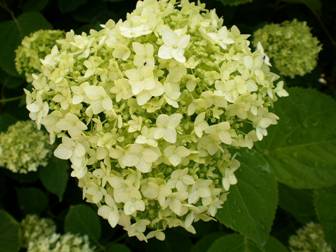
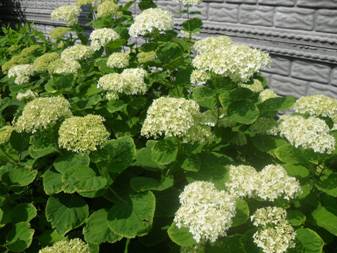
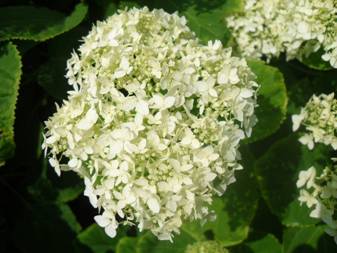
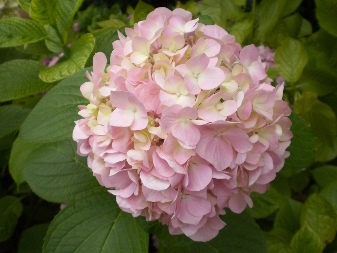
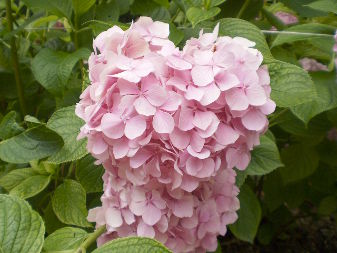
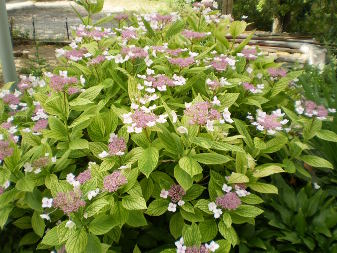
Hydrangea, fam. Hydrangeaceae.
An ornamental shrub, blooms in the city starting from June. There are five most common species of hydrangea in our gardens: smooth (arborescens), panicled (paniculata), climbing (petiolaris), heteromalla (or bretschneideri), and bigleaf (macrophylla). They can be propagated by seeds, division, and propagules. The exact conditions of care depend on the selected species. For example, the macrophylla species should not be pruned, since it will be unable to bloom then; it also needs thorough covering in winter. Hydrangeas in general require abundant watering in summer and shading from the full sun, and soil mulching is also desirable. These plants prefer acid and fertile soils, at least not lime-rich. Interestingly, the same plant can bloom with different colors, depending on the external conditions, which include mineral balance in the soil. Sometimes, the single plant brings pink or white flowers in one year, then blue flowers in another. The hydrangea inflorescences build-up is similar to Guelder-rose – the outer ring of the largest flowers is sterile.
The roots, leaves and flowers of hydrangeas (mostly the arborescens species) are used in folk medicine as teas, concoctions and tinctures. They may be applied for urogenital diseases, inflammations, as antiparasitic remedy, and for various skin conditions. But it should be kept in mind that all parts of the plant contain toxic cyanogenic glycosides (source of hydrocyanic acid), which disrupt the activity of central nervous system and breathing.